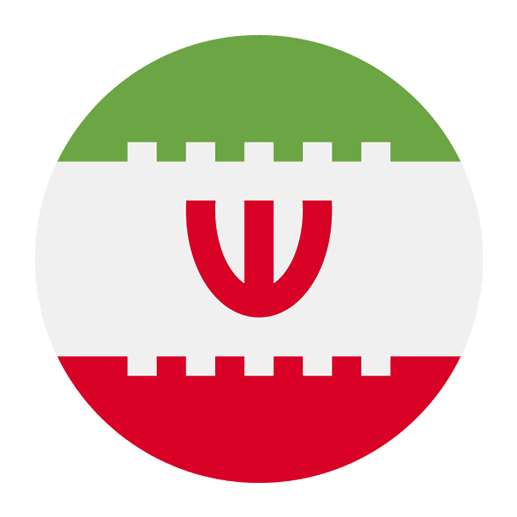Persian, or Farsi as it is called in Iran, is a rich and ancient language with a history spanning over two millennia. It has evolved through various stages, from its classical form to the modern vernacular spoken today. Understanding the key differences between Classical Persian and Modern Persian can be crucial for language learners, historians, and cultural enthusiasts alike. This article delves into these differences, providing a comprehensive guide to the evolution and distinctions between these two forms of the Persian language.
Linguistic Evolution: An Overview
The Persian language has experienced significant changes over the centuries. It can be broadly divided into three stages: Old Persian, Middle Persian, and New Persian. Classical Persian, often referred to as New Persian, emerged around the 9th century and continued to be widely used until the 19th century. Modern Persian, on the other hand, is the contemporary form of the language spoken today in Iran, Afghanistan (where it is known as Dari), and Tajikistan (where it is called Tajik).
Old Persian and Middle Persian
Before diving into the differences between Classical and Modern Persian, it’s essential to briefly touch on Old and Middle Persian:
– **Old Persian**: This is the earliest attested form of the Persian language, used in the Achaemenid Empire (circa 550–330 BCE). It is primarily known from inscriptions and historical texts.
– **Middle Persian**: Also known as Pahlavi, this stage was prominent during the Sassanian Empire (224–651 CE). It served as a bridge between Old Persian and New Persian, contributing significantly to the development of Classical Persian.
Key Differences Between Classical and Modern Persian
1. Vocabulary
One of the most noticeable differences between Classical and Modern Persian is vocabulary. Classical Persian has a rich lexicon derived from Middle Persian, Arabic, and various other languages due to historical conquests and cultural exchanges. While Modern Persian retains much of this classical vocabulary, it has also incorporated numerous new words from European languages, particularly French, English, and Russian, as a result of globalization and modernization.
Examples:
– Classical Persian: “کتاب” (ketâb) meaning “book”
– Modern Persian: “کامپیوتر” (kâmpiyuter) meaning “computer” (borrowed from English)
2. Grammar and Syntax
The grammatical structure of Persian has remained relatively stable over the centuries. However, there are some syntactical differences between Classical and Modern Persian:
– **Verb Conjugation**: Classical Persian often employs more complex and archaic verb forms that are seldom used in the modern language. Modern Persian has simplified many of these forms.
– Classical Persian: “گفتی” (gofti) meaning “you said” (formal)
– Modern Persian: “گفتی” (gofti) meaning “you said” (informal)
– **Syntax**: The word order in Classical Persian can be more flexible, allowing for poetic and rhetorical flourishes. Modern Persian tends to follow a more rigid Subject-Object-Verb (SOV) order.
– Classical Persian: “کتاب را خواندم” (ketâb râ khândam) meaning “I read the book”
– Modern Persian: “من کتاب را خواندم” (man ketâb râ khândam) meaning “I read the book”
3. Pronunciation
Pronunciation has also evolved, with some phonetic elements disappearing or changing over time. For instance, the classical pronunciation of certain vowels and consonants can differ significantly from their modern counterparts.
– **Vowels**: The pronunciation of vowels in Classical Persian can be more extended and pronounced, whereas Modern Persian often shortens them.
– Classical Persian: “آب” (âb) pronounced with a longer “a” sound
– Modern Persian: “آب” (âb) pronounced with a shorter “a” sound
– **Consonants**: Some consonants in Classical Persian have either changed pronunciation or fallen out of use in Modern Persian.
– Classical Persian: “ث” (th) pronounced as “th” in “think”
– Modern Persian: “ث” (s) pronounced as “s” in “see”
4. Literary Style
Classical Persian is renowned for its literary tradition, with poets like Rumi, Hafez, and Ferdowsi contributing to a rich corpus of poetry and prose. The style of Classical Persian literature is often ornate, employing elaborate metaphors, similes, and allegories.
Modern Persian literature, while still rich and expressive, tends to be more straightforward and less adorned. Contemporary writers focus on realism and modern themes, reflecting the social and political changes of the 20th and 21st centuries.
– **Classical Persian**: Known for its use of intricate metaphors and allusions.
– Example: “چو ایران نباشد تن من مباد” (cho Irân nabâshad tan-e man nabâd) meaning “If there is no Iran, may my body not exist” (Ferdowsi)
– **Modern Persian**: Often more direct and focused on contemporary issues.
– Example: “من اینجا هستم” (man injâ hastam) meaning “I am here”
5. Cultural Context
Classical Persian was the lingua franca of a vast empire, influencing and being influenced by various cultures and languages. It was the language of the court, literature, and scholarship. The cultural context of Classical Persian is deeply intertwined with the Islamic Golden Age, Persianate societies, and the poetry and philosophy of the time.
Modern Persian, while still a language of culture and literature, has been shaped by contemporary political and social changes. The 20th century, in particular, saw significant shifts due to events like the Constitutional Revolution, the Pahlavi dynasty, and the Iranian Revolution of 1979. These events have influenced the language, introducing new vocabulary and changing its use in public and private life.
Learning Classical vs. Modern Persian
For language learners, the choice between studying Classical and Modern Persian depends on their goals and interests. Here are some considerations for each:
1. Classical Persian
– **Purpose**: Ideal for those interested in Persian literature, history, and classical poetry. Scholars and historians often need to understand Classical Persian to access primary sources.
– **Challenges**: The archaic vocabulary, complex grammar, and ornate literary style can be challenging for modern learners. However, mastering Classical Persian can provide a deep appreciation of Persian culture and literary heritage.
– **Resources**: Classical Persian texts, dictionaries, and grammar guides are essential. Courses in classical literature and poetry can also be beneficial.
2. Modern Persian
– **Purpose**: Suitable for those who wish to communicate with Persian speakers today, travel to Persian-speaking countries, or engage with contemporary Persian literature and media.
– **Advantages**: Modern Persian is more accessible and practical for everyday use. It is also widely taught in language courses and programs around the world.
– **Resources**: Modern Persian textbooks, language apps, and online courses are widely available. Engaging with contemporary Persian media, such as films, news, and social media, can also enhance learning.
Conclusion
The differences between Classical and Modern Persian reflect the language’s rich history and dynamic evolution. While Classical Persian offers a window into the past, with its elaborate literary style and historical significance, Modern Persian provides a practical means of communication and engagement with contemporary Persian-speaking societies.
For language learners, understanding these differences can enhance their appreciation of Persian culture and literature. Whether one’s interest lies in the classical poetry of Rumi and Hafez or the modern prose of contemporary Iranian authors, the Persian language offers a wealth of knowledge and beauty to explore.
In conclusion, the journey of learning Persian, whether classical or modern, is a rewarding endeavor that opens doors to a rich cultural and historical heritage. By recognizing the key differences and appreciating the unique characteristics of each form, learners can gain a deeper understanding and connection to this ancient and vibrant language.

